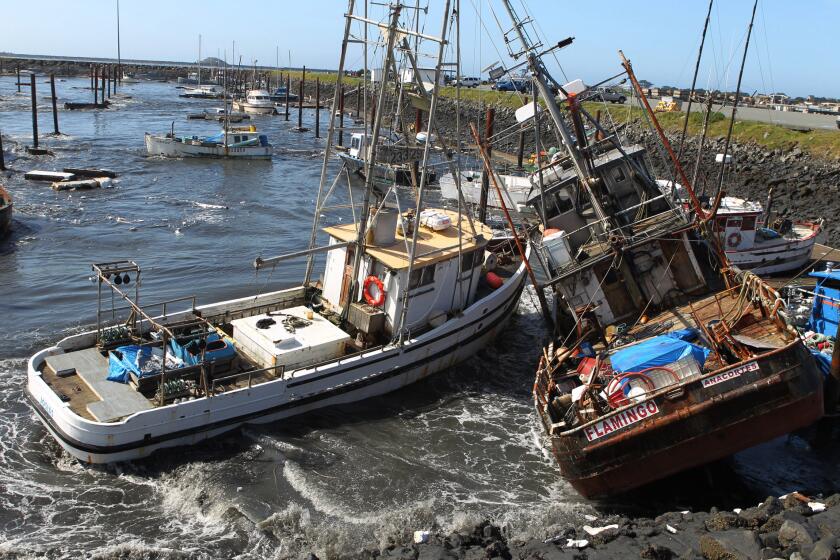Earthquake Measuring System to Be Upgraded
- Share via
Nearly 600 digital earthquake measurement stations will be added across Southern California under a five-year program to provide faster information on where the most damaging shaking has occurred when earthquakes strike, scientists said last week.
The plan is to identify the location and magnitude of earthquakes within one to three minutes of the event, and within 10 minutes make available a preliminary map highlighting areas of damaging ground shaking.
Within 20 minutes, under the fully automated system, more detailed maps of shaking would be ready, telling authorities and utilities where to concentrate their rescue efforts.
The Federal Emergency Management Agency is providing 75% of the $16.75-million cost of what will be known as the Trinet project. The state Division of Mines and Geology and Caltech will together be obligated to come up with the other 25% of the project’s cost.
Existing seismic networks of Caltech, the U.S. Geological Survey and the Division of Mines and Geology will be tied together and expanded in the project, with the information being funneled into collection and analysis installations at Caltech and in Sacramento. The state Office of Emergency Services will help coordinate and distribute the information.
At present, fewer than 100 instruments automatically funnel information to Caltech. Several hundred other instruments of older vintage require manual on-site collection and thus cannot provide quick data. Many of these will be replaced in the project.
Caltech scientists said the school’s share of the cost will be $2.5 million, and commitments have already been received from GTE and Pacific Bell for each to make $250,000 contributions. Other corporations, as well as foundations and individuals, will be solicited for the remainder.
Egill Hauksson, a Caltech seismologist, said initial work will begin promptly on putting together the network, using the first contributions as a match for the federal money used first.
The Trinet system, when complete, will augment and speed up the existing CUBE system run by Caltech and the Geological Survey, which is now capable of recording only limited information on shaking.
Thomas H. Heaton, a professor of engineering seismology at Caltech, said this is critical, because in the past, hours have gone by before emergency workers realized the location of some of the worst damage.
Heaton said people were fortunate that the Northridge earthquake of Jan. 17, 1994, occurred at 4:31 a.m., when almost all families were together at home.
Had it taken place later during the day, many parents would have been working in separate places, children would have been at school, and family units would have been badly scattered, he said. Knowing quickly where the worst shaking had occurred could have been important to them.
Both the Division of Mines and Geology and Caltech have already obtained a few instruments purchased earlier by the Geological Survey with Northridge response funds.
More to Read
Sign up for Essential California
The most important California stories and recommendations in your inbox every morning.
You may occasionally receive promotional content from the Los Angeles Times.










